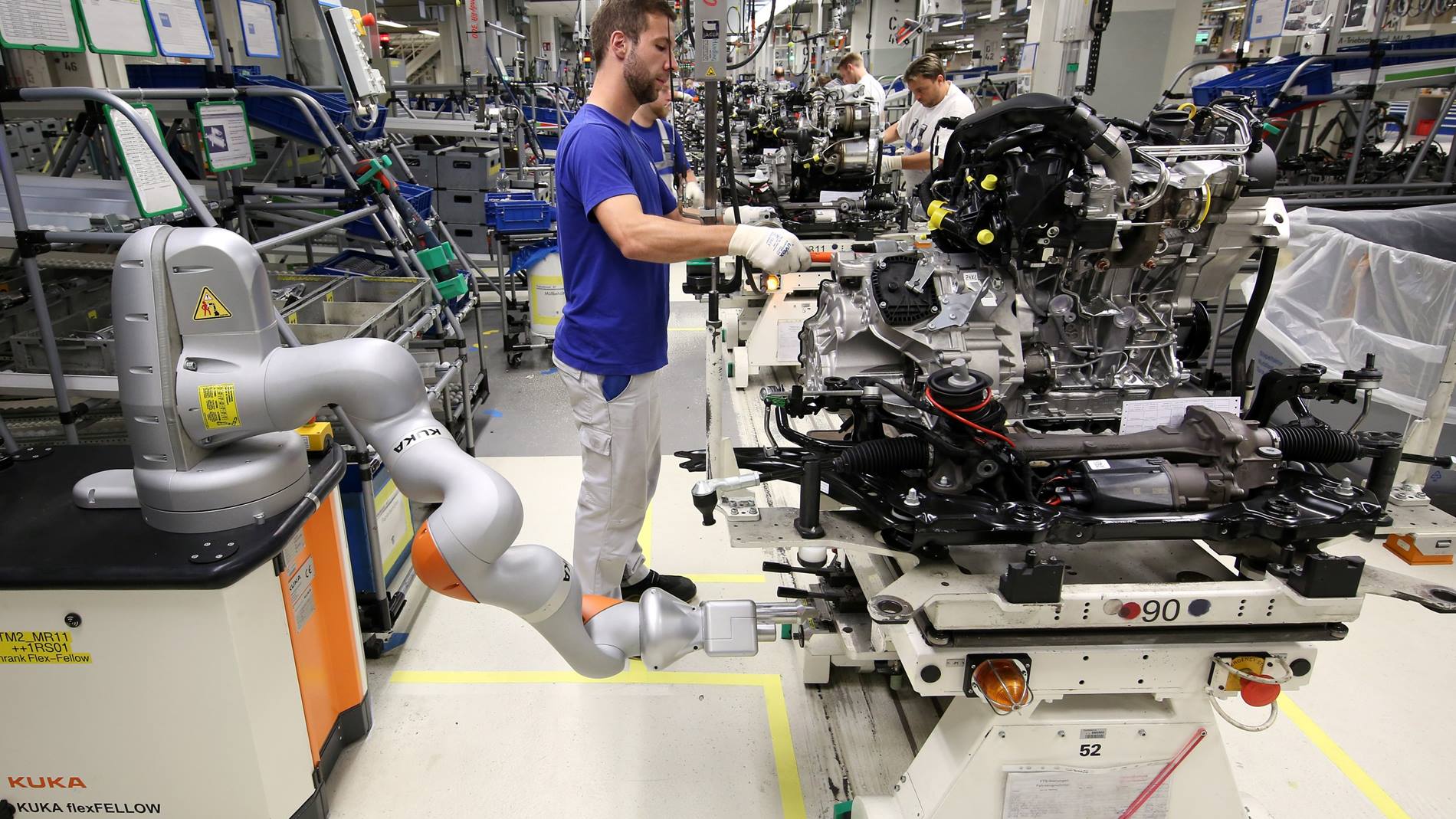Screwing the pendulum support into place as part of the drive train pre-assembly process is an ergonomically inconvenient and arduous routine operation. The component, which prevents weaving when there are changes in the engine load, is situated below the drive train and therefore in a difficult position for human workers to access. This is a typical application for robots, which are designed to collaborate with human workers and relieve them of such physically demanding tasks. In the summer of 2015, VW started to test the prototype for this type of automation solution – the “bolt” module from the KUKA flexFELLOW family, which is based on the LBR iiwa lightweight robot. This is a complete system for automating manual screwing-fastening processes. The key benefit of the tiny mobile system is that, If necessary, it can be moved to different locations. These systems can be put into operation in five to ten minutes without the inconvenience of having to rebuild or dismantle the production line. The KUKA flexFELLOW-bolt was tested for three months at Volkswagen’s Competence Center for Technology and Innovation (KTI) at the VW plant in Wolfsburg, Germany and refined for series production under conditions similar to those during production. Since mid-May 2016, two units have been relieving their human colleagues of physically demanding work at the engine assembly line for the Golf. The employees have not been afraid to make contact with the robots. Quite the opposite in fact – both the human workers and the robots can now make full use of their respective strengths. The outcome is a shorter manufacturing time.
Ergonomic, efficient and safe assembly procedure
The components for the drive train assembly are delivered by Automated Guided Vehicles (AGVs). Thanks to its responsive properties, the KUKA flexFELLOW independently locates the position of the screws – even when the AGV does not stop precisely at the workstation. “We can compensate for the transport systems' lack of precision by programming the LBR iiwa and executing a cycle-time optimized, sensitive search run,” explains Henning Borkeloh, Vice President of Advanced Technology Solutions at KUKA Systems. Human-robot collaboration provides great advantages in terms of the ergonomics of the work station since employees would otherwise have to operate the power wrench at knee height. Differing somewhat from the usual approach, the worker and the robot are not separated by a safety fence. While the employee is screwing the starter into place, the KUKA flexFELLOW is working right alongside him on the same drive train. Using torque sensors, the robot detects if it is touched by a human and stops immediately. Additional protection systems are not required. Furthermore, the tools are designed specifically for human-robot collaboration. Due to the fact that conventional tools can only be used with great difficulty or at a reduced speed, KUKA developed special HRC application modules with the essential safety properties such as a shutdown function, controller interfacing and design features. One of these modules is the HRC A power wrench used by the flexFELLOW-bolt during the drive train assembly process. This meets the usual technical requirements, but, at the same time, is lighter, rounder and safer than the conventional industrial equivalent.
Compact and flexible
The KUKA flexFELLOW integrates all the required components: the customer-specific robot controller, a power supply for the power wrench, a stack light to visualize the system state as well as the shutdown module. This makes it extremely compact. “In the automotive industry, there is no space for external systems with large safety fencing,” says Henning Borkeloh. “A conventional industrial robot would require up to five times more space than the flexFELLOW – VW would have had to completely rebuild the entire line.” The ability to handle a wider range of variants is also becoming increasingly important. More and more models are coming off the line, product life cycles are getting shorter and shorter. Instead of having to tear apart a standard cell, multiple flexFELLOW units can be combined or quickly reconfigured to form entire systems. This makes it possible to automate processes that extend well beyond conventional industrial robotics. “Versatile assembly systems with HRC as a ‘lean production concept’ rather than larger robots behind fencing – that is our vision,” says Henning Borkeloh.

